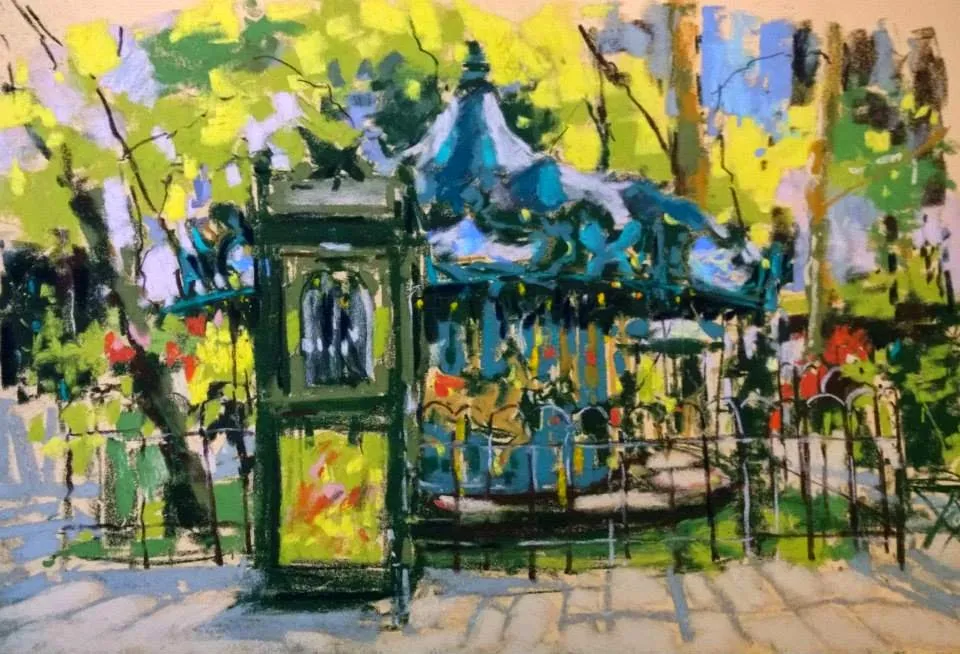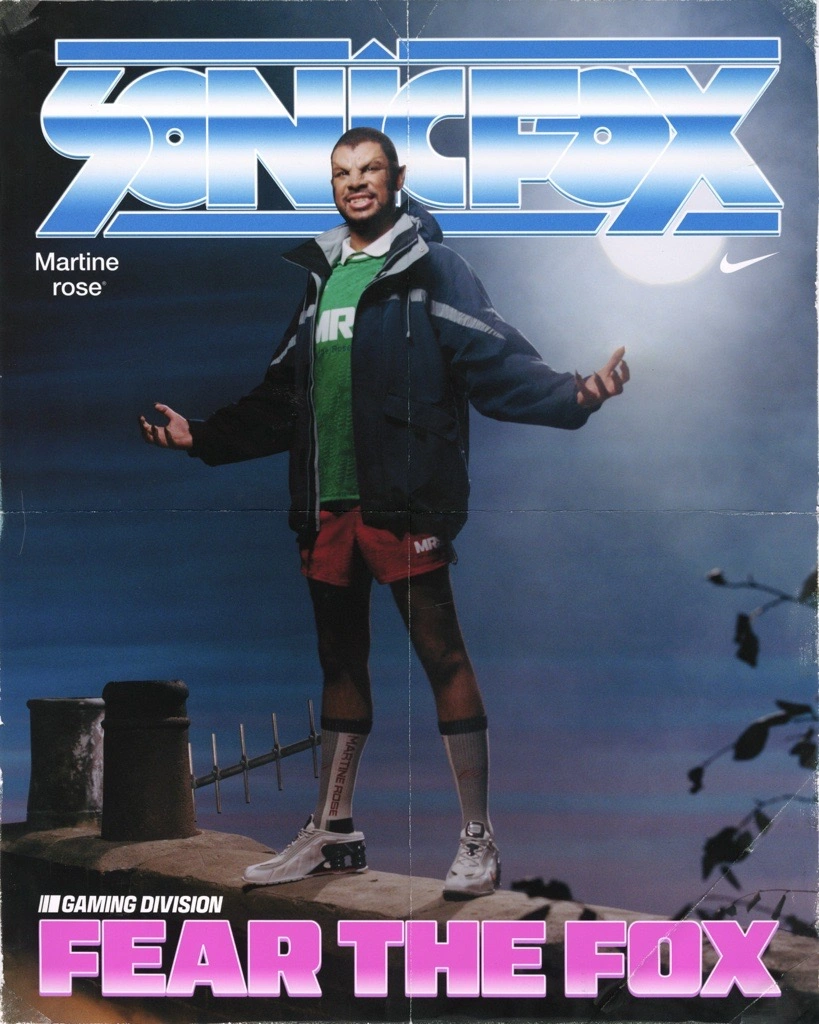Le Carousel, pastel drawing painted during my time as painter-in-residence in Bryant Park, NYC. Anne Kullaf © 2025
New York City has always been a study in contrasts: towering steel and glass juxtaposed with small, hidden green sanctuaries. Perhaps nowhere is this tension more elegantly resolved than in Bryant Park, a lush, meticulously designed open space nestled among Midtown Manhattan’s concrete giants. Over the decades, Bryant Park has transformed from a neglected, dangerous stretch of land into one of the city’s most beloved landmarks and social hubs. Today, it is celebrated not only as a model of urban renewal but also as a microcosm of New York’s endless capacity for reinvention.
From Reservoir to Literary Square: Early History
Before it was Bryant Park, the area was known as Reservoir Square. In the early 19th century, it housed the Croton Distributing Reservoir, a massive stone structure designed to supply clean drinking water to a rapidly growing city. Completed in 1842, the reservoir was a marvel of engineering and a symbol of progress for New Yorkers who had long contended with waterborne diseases.
As the city evolved, so too did the square. By the late 19th century, the reservoir was demolished to make way for the construction of the New York Public Library’s main branch, which opened in 1911. The surrounding area was rebranded as Bryant Park, in honor of William Cullen Bryant — a prominent poet, journalist, and longtime advocate for civic improvement and urban green spaces. His legacy as an editor and cultural figure helped cement the park’s reputation as a center for intellectual and artistic life.
The Decline: A Troubled Mid-20th Century
The mid-20th century was not kind to Bryant Park. In the decades following World War II, New York City faced mounting challenges: economic decline, rising crime rates, and urban neglect. Bryant Park was no exception. By the 1970s, it had earned a grim reputation as a haven for drug dealers, vagrants, and petty criminals. Its once-vibrant lawns were threadbare, its pathways cracked and littered.
This era saw the park transform into an urban cautionary tale. Tourists avoided it; office workers hurried past its edges without daring to step inside. Despite its location next to the New York Public Library and amidst one of the world’s busiest business districts, Bryant Park felt cut off from the city’s cultural and economic lifeblood.
A Vision for Revival: The 1980s Transformation
The park’s renaissance began in the early 1980s when the Bryant Park Restoration Corporation (now known as Bryant Park Corporation) was formed. Led by urban visionary Dan Biederman, the initiative adopted a bold new philosophy: reclaiming public space through careful design, active programming, and robust maintenance.
Key changes included lowering hedges and removing visual barriers, a strategy inspired by urbanist Jane Jacobs’s principles of “eyes on the street.” Visibility and accessibility were prioritized to deter illicit activity and make the park more inviting. New pathways, carefully curated flower beds, movable chairs, and European-style kiosks replaced the dilapidated structures.
By 1992, after extensive renovation, Bryant Park reopened to public acclaim. What emerged was a carefully orchestrated urban “living room,” a space that felt both intimate and cosmopolitan. Its success would come to be studied and emulated by urban planners around the world.
Design Details: A Balancing Act
One of Bryant Park’s most remarkable achievements lies in its design harmony. Despite being a relatively modest 9.6 acres, the park feels spacious and welcoming. The central lawn, a sprawling green rectangle, offers an unobstructed visual axis that draws the eye toward the grand Beaux-Arts facade of the New York Public Library.
Surrounding the lawn, alleys of London plane trees create darkened walkways reminiscent of Parisian promenades. Movable bistro chairs encourage social interaction and flexibility, allowing visitors to create their own micro-environments.
Kiosks and pavilions offer food and beverages that cater to both tourists and Midtown office workers, bridging economic and cultural divides. Seasonal plantings, intricate stonework, and thoughtful lighting transform the park into a dynamic space that evolves throughout the year, offering a fresh experience each season.
Cultural Programming: Turning Space into Place
Bryant Park’s transformation didn’t stop at physical design. Programming has played a critical role in redefining it as a cultural landmark. From the famed summer movie nights on the lawn to winter ice skating beneath twinkling holiday lights, the park offers year-round activities that invite diverse audiences.
Seasonal markets, poetry readings, dance performances, and yoga classes reflect New York’s eclectic spirit. The park also serves as an open-air reading room, a nod to its proximity to the library and to Bryant’s literary legacy. Free Wi-Fi, chess tables, and ping-pong stations further reinforce its identity as a “people’s park.”
Events are deliberately designed to foster inclusivity, drawing in both locals and tourists. As a result, Bryant Park feels alive at virtually any hour of the day — a vibrant antidote to the city’s frenetic energy.
Bryant Park Today: A Landmark Reimagined
In recent years, Bryant Park has only strengthened its role as a central gathering space. In an age of remote work and hybrid schedules, the park has become an outdoor “third place” for countless New Yorkers — a space to take meetings, unwind, or connect with friends away from the confines of the office or home.
As cities globally grapple with post-pandemic realities and the redefinition of public space, Bryant Park serves as a case study in resilience and adaptability. It highlights the power of thoughtful urban design to uplift a community and transform perceptions of what city parks can be.
The park’s seasonal Winter Village has become an international attraction, drawing visitors for its European-style holiday market and skating rink. Meanwhile, summer concerts, literary festivals, and silent discos keep the park bustling through the warmer months.
Chartering Bryant Park’s Future: Sustainability and Stewardship
Looking forward, Bryant Park Corporation continues to innovate. Sustainability initiatives — including native plantings, pollinator-supportive gardens, and waste reduction programs — demonstrate a commitment to ecological stewardship.
As climate change and urban density challenges intensify, the park’s future depends on its ability to remain both a refuge and a model for adaptive, green urban planning. Bryant Park is not simply a static historical landmark; it is a living organism, constantly evolving to meet the needs of New Yorkers and visitors alike.
Personal Experiences: The Spirit of Belonging
What makes Bryant Park exceptional is not merely its beauty or its programming, but the sense of community it fosters. A lunchtime picnic on the lawn transforms into an impromptu networking session among professionals. A yoga class becomes a quiet reprieve for a young mother. A chess match between strangers can blossom into a lasting friendship.
For many, Bryant Park offers a rare moment of pause in a city defined by constant motion. It allows New Yorkers to see one another, to be seen, and to share a fleeting but genuine connection. The laughter of children, the murmur of readers, and the gentle clink of coffee cups create an urban symphony that feels both timeless and uniquely of this moment.
Impression
Bryant Park’s journey from neglected lot to beloved urban oasis mirrors New York City’s own story of resilience, reinvention, and relentless energy. What was once a symbol of urban decay has become a testament to the power of design, community engagement, and visionary leadership.
Today, Bryant Park stands as more than a park. It is a living room for the city, a cultural stage, a green sanctuary, and an open invitation to pause and breathe. Its continued relevance, vibrancy, and adaptability ensure that it remains not just a landmark but a vital thread in the fabric of New York life.
No comments yet.








